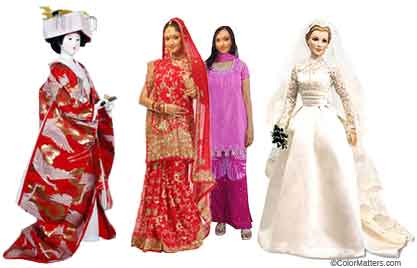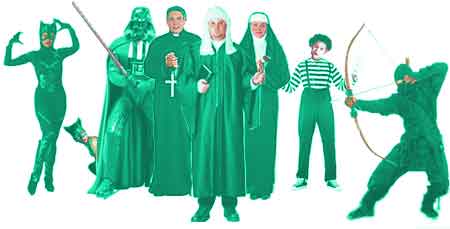Color Matters for What You Wear
Clothes are like a second skin. Most likely you feel good when you wear your favorite color. What happens when someone sees you wearing any color - for example blue? Does the color send a message?
What do you think about pink and blue in the pictures below?

One of the most common examples of color symbolism in clothing is the custom of using pink for girls and blue for boys ... but it wasn't always this way. This tradition emerged at the turn of the 20th century. Since pink was thought to be a stronger color, it was best suited for boys; blue was more delicate and dainty and best for girls. In 1921, the Women's Institute for Domestic Science in Pennsylvania endorsed pink for boys, blue for girls.
Source: Berlin and Kay, When Blue Meant Yellow,.pp. 20 -21)
Even more interesting is the fact that pink is the color for baby boys and blue is the color for baby girls in Belgium today.
Another interesting fact about pink is that pink is a very masculine color in Bermuda. Also, British bankers and barristers have worn pink shirts for decades. Pink goes in and out of fashion in other parts of the world.
Colors mean different things to different people.
What about the color worn for weddings and funerals?

White is the traditional color for a bride's wedding gown in the U.S. and most European cultures. White symbolizes purity and innocence.
In Asia, white is the color of death. This arises from the belief that death is seen as a beginning and that white represents the purity that the deceased brings into the next life. Therefore, brides in Japan and China wear red in traditional wedding ceremonies.
White is also associated with death in India, where widows wear white. Consequently, red or pink saris are the most popular colors for brides.
What about black clothes?
Black symbolizes death and is the traditional color of mourning in Western cultures. Black clothing is associated with powerful forces in many parts of the world. Bad and good. Witches, the devil, ninjas, cat burglars, Darth Vader, CatWoman, and Batman wear black....and so do priests, nuns, judges, mimes, Mennonites, Bedouins, and monks.
Maybe the common thread is that these people are signaling their seriousness of purpose - or the need to be hard to see - or both.
Here's something else to think about: What happens when the same people (in the picture above) wear green? Are they as powerful? Are the priest and nun as respectable?

You might also be interested in:![]()
Explore The Meanings of Colors
Find our more about red, yellow, blue, green, orange, purple and pink.



